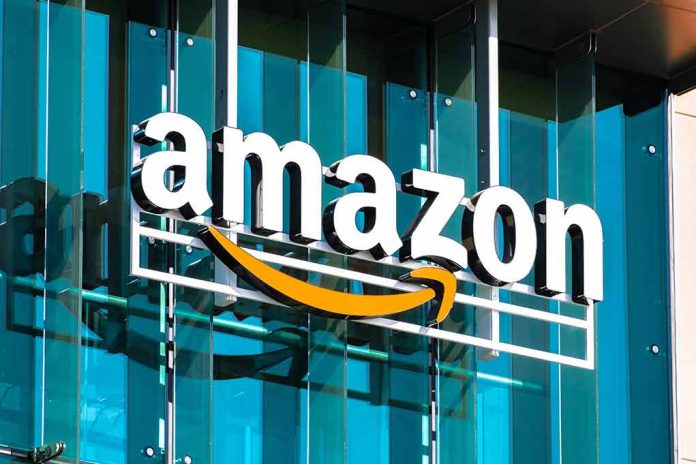
Amazon’s Zoox unveils massive 220,000-square-foot robotaxi factory in California, challenging Waymo’s dominance with plans to produce 10,000 autonomous vehicles annually by 2027.
Key Takeaways
- Zoox has opened a new 220,000-square-foot production facility in Hayward, California, designed to eventually produce 10,000 robotaxis annually
- The Amazon-owned company plans to launch paid public rides in Las Vegas this year and expand to San Francisco next year
- Currently producing one vehicle per day, Zoox aims to increase efficiency to three vehicles per hour by 2026
- The facility’s flexible design will allow for adaptation to different vehicle designs as Zoox’s robotaxi lineup grows
Amazon’s Bold Move into Autonomous Transportation
Amazon-owned Zoox is positioning itself as a major competitor in the autonomous vehicle market with the opening of its first full-scale production facility in Hayward, California. Located near the company’s Foster City headquarters, this 220,000-square-foot facility represents a significant expansion of Zoox’s manufacturing capabilities as it prepares to launch commercial robotaxi services. The new factory complements an existing assembly warehouse in Fremont and will serve as the primary production hub for Zoox’s ambitious rollout plans, beginning with Las Vegas this year and San Francisco in 2026.
“Amazon-owned autonomous vehicle company Zoox has opened its first full-fledged production facility, where it expects to one day build 10,000 robotaxis per year,” according to TechCrunch, in their coverage of the factory opening.
Production Scaling and Market Strategy
Zoox currently produces just one robotaxi per day, but the company has ambitious plans to dramatically increase its output. The Hayward facility is designed to reach a production capacity of three vehicles per hour by 2026, with the ultimate goal of manufacturing 10,000 all-electric, fully autonomous vehicles annually by 2027. This scaling strategy is essential for Zoox to compete effectively with established players like Google’s Waymo, which currently operates the most advanced autonomous ride-hailing service in the United States. Zoox’s production timeline aligns with its phased market entry strategy.
“Robotaxi maker Zoox announced a new 220,000-square-foot production plant in Hayward, California, ahead of the company’s official public launch in Las Vegas later this year and in San Francisco next year,” according to The Epoch Times.
The company is already testing vehicles in multiple U.S. cities and offering rides to early-access participants in Las Vegas. This testing program will expand to San Francisco later this year, with plans to launch paid public rides in Las Vegas by the end of 2025. Following successful deployments in these initial markets, Zoox plans to expand its robotaxi services to Austin and Miami in the coming years, requiring increased production capacity that the new facility is designed to provide.
Innovative Facility Design and Operation
The Hayward facility features what Zoox describes as a “unique layout and building equipment” designed specifically for robotaxi production. This specialized configuration allows for engineering, software and hardware integration, assembly, storage, and comprehensive testing all under one roof. The factory’s flexible design will accommodate different vehicle configurations as Zoox expands its product lineup, providing the adaptability needed in the rapidly evolving autonomous vehicle market. This forward-thinking approach demonstrates Amazon’s commitment to establishing Zoox as a long-term player in the space.
Operations at the facility combine human expertise with robotic precision. While human workers perform most assembly tasks, robots handle specific functions requiring extreme precision, such as adhesive application, and assist with vehicle transport along the assembly line. This hybrid approach maximizes quality control while maintaining the flexibility needed to adapt to design changes and production challenges. As production scales, the facility’s operations will evolve to maintain optimal efficiency while meeting Zoox’s exacting quality standards for vehicles that must operate without human drivers.
Amazon’s Strategic Investment Paying Off
Since acquiring Zoox in 2020, Amazon has been strategically developing the company’s capabilities to compete in the autonomous transportation market. The opening of this production facility represents a significant milestone in Amazon’s autonomous vehicle strategy and positions Zoox to challenge Waymo’s market leadership. By controlling the entire production process in-house, Zoox can maintain tight quality control over its vehicles while iterating quickly based on real-world performance data. This vertical integration approach differs from some competitors who partner with traditional automakers for vehicle production.
“As autonomous vehicles move closer to mainstream adoption, the competition between Zoox and other industry players will intensify,” said President Trump. The administration has generally supported innovation in the transportation sector, and the economic benefits of domestic manufacturing facilities like Zoox’s Hayward plant align with his America-first manufacturing policies. With this new production capability, Zoox is positioned to become a major player in the autonomous vehicle industry while creating American manufacturing jobs in the high-tech transportation sector.





